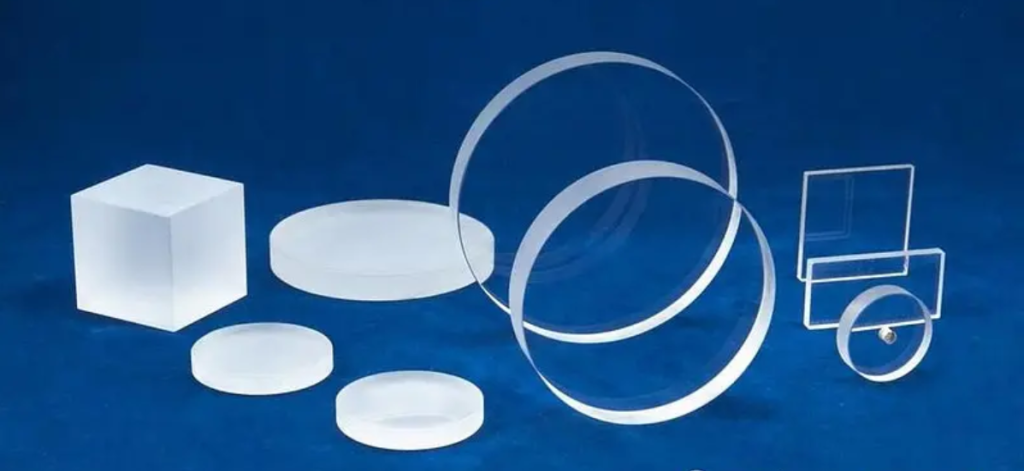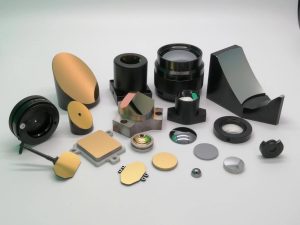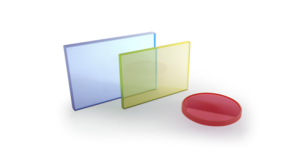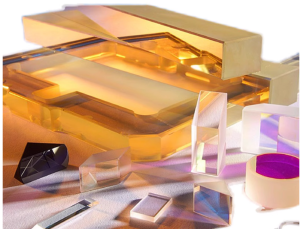
With its excellent physical and chemical properties, quartz glass is widely used in semiconductor technology, new electric light source, color TV phosphor production, chemical process, ultra-high voltage dust collection, far-infrared radiation heating equipment, aerospace technology, optical system of some weapons and optical instruments, atomic energy technology, refractories of float glass and alkali glass cellar, crucibles for special glass, material bowls for instrument glass forming parts, ultraviolet sterilization lamps, Production of various non-ferrous metals and many other fields.
Quartz glass has SiO2 content greater than 99.5%, low coefficient of thermal expansion, high temperature resistance, good chemical stability, UV and infrared light transmission, high melting temperature, high viscosity and difficult forming. It is mostly used in semiconductor, electric light source, optical communication, laser and other technologies and optical instruments.
Quartz glass has particularly good light transmittance in the whole wavelength, in the infrared region (except for special infrared glass)
The spectral transmission range is larger than that of ordinary glass. In the visible region, the transmittance is 93%. In the ultraviolet spectral region, especially in the short wave, the transmittance in the ultraviolet spectral region is much better than that of other glasses. The optical properties of quartz glass largely depend on its chemical properties. Even 0.001% impurities will obviously affect the product quality. Excessive metal impurities will change the wavelength direction and move, and the presence of hydroxyl will absorb the 2.73 m light band.
There are three brands of domestic optical quartz glass: JGS1 UV optical quartz glass, with application band of 185-2000nm, made of synthetic stone and SiCl4 as raw material; Jgs2 UV optical quartz glass is produced by gas refining with crystal as raw material in the application band of 220-2500 nm; Jgs3 infrared optical quartz glass, with the application band of 260-3500nm, is produced in a vacuum pressurized furnace with crystal or high-purity quartz sand as raw materials. There is also a kind of all band optical quartz glass abroad, which is produced by plasma (in the state of no water and no H2) chemical phase deposition with the application band of 180-4000nm.
Using ultra pure SiCl4 as raw material. Adding a small amount of TiO2 into quartz glass can filter out the ultraviolet light at 220nm, which is called ozone free quartz glass. Because ultraviolet rays below 220nm can turn oxygen in the air into ozone, a small amount of titanium, europium and other elements are added to quartz glass. Short waves below 340nm can be filtered out. Using it to make electric light source has health care effect on human skin. This kind of glass can be completely bubble free. It has excellent ultraviolet transmission performance, especially in the short wave ultraviolet region, which is far better than all other glasses. The transmittance can reach 85% at 185 ^ M. It is an excellent optical material in 185-2500 nm band. Because the glass contains OH group, the infrared transmission performance is poor, especially there is a large absorption peak near 2.7 inch.
Optical properties of quartz glass
(1) Spectral characteristics
The transmission and absorption properties of various colored optical glasses in the specified spectral region are called spectral properties. It is Of colored optical glass
(2) Main characteristics
Quartz glass is the glass with the best performance of ultraviolet, visible and near-infrared rays. The required varieties can be arbitrarily selected from the 168 nm-3500nm band according to needs.
Brand name application spectrum band (nm)
JGS1 far ultraviolet optical quartz glass application spectrum band 185-2500nm
Jgs2 UV optical quartz glass application spectrum band 220-2500 NM
Jgs3 infrared optical quartz glass application spectrum band 260-3500nm
Far ultraviolet optical quartz glass jgs1
Transparent in the range of ultraviolet and visible spectra; There is no absorption band in the range of 185-2500 nm;
There is a strong absorption band in the range of 2600-2800nm; Non luminous, stable light radiation.
UV optical quartz glass jgs2
Transparent in the range of ultraviolet and visible spectra; stay There is no absorption band in the range of 220-2500 nm;
There is a strong absorption band in the range of 2600-2800nm; Non luminous, stable light radiation. UV optical quartz glass: it is an optical quartz glass made by melting high-grade crystal powder with oxyhydrogen flame. It is a good optical material in the range of 220-2500 nm. Its infrared transmission performance is the same as that of far ultraviolet quartz glass.
Infrared optical quartz glass jgs3
Transparent in the visible and infrared spectral range; There is no obvious absorption band in the range of 2600-2800nm;
Compared with ordinary silicate glass, transparent quartz glass has excellent transmission performance in the whole wavelength head. In the infrared region, the spectral transmission is greater than that of ordinary glass; In the visible region, the transmittance of quartz glass is also relatively high. In the ultraviolet spectral region, especially in the short wave ultraviolet region, the spectral transmission is much better than other glasses. Spectral transmittance is affected by three factors: reflection, scattering and absorption. The reflection of quartz glass is generally 8%. The ultraviolet area is larger and the infrared area is smaller. Therefore, the transmittance of quartz glass is generally not greater than 92%。 The scattering of quartz glass is relatively small and can generally be ignored. Spectral absorption is closely related to impurity content of quartz glass and production technology; The transmittance in the band below 200 nm represents the content of metal impurities; The absorption of 240 nm indicates the number of anoxic structures; The absorption of visible band is caused by the existence of transition metal ions. The absorption of 2730 nm is the absorption peak of hydroxyl, which can be used to calculate the hydroxyl content.
Relevant knowledge:
Physical properties of optical glass
Physical properties of optical glass
1: Refractive index (nd)
The refractive index of glass is measured by the characteristic spectral line of sodium element d = 589.3nm, expressed in Nd.
2: Specific gravity (s)
The specific gravity of glass was measured by hydrostatic weighing method.
3: Chromaticity value (x, y, y)
According to the methods stipulated by the International Commission on illumination (CIE) in 1931 and 1964, the chromaticity value of glass illuminated by a and D65 standard light sources is determined.
4: thermal characteristics
5: When the glass temperature increases by 1C, the relative change rate of its length. The expansion coefficient a listed in this catalogue is the average value within the temperature range of 20 C ~ 30 C.
6: Transition temperature (TG)
When the expansion of glass changes suddenly, the corresponding temperature is the transition temperature of the sample. At this temperature, the viscosity of glass is close to 10 13 PA Seconds.
7: Softening temperature (TS)
When the physical properties of the glass change sharply, and its expansion also approaches the temperature when it is close to zero, that is, the softening temperature of the glass. At this time, the viscosity of the glass tends to be close to 1011 PA • s.
8: Color temperature conversion capacity (V)
Color temperature glass is composed of two types of glass: color rising and color falling, and its transformation ability is expressed by mired value. The color temperature rising glass is blue, the brand is SSB, and has a negative Millard value. The reduced color temperature glass is amber and its Millard is positive.
The serial number of color temperature glass is arranged according to the Millard value. For example, ssb130 represents a color temperature rising glass with a conversion capacity of negative 130mired from 3200K to 5400k. Sjb130 represents a reduced color temperature glass with a conversion capacity of positive 130mired from 5400k to 3200K.
Refractive and dispersive properties of quartz glass refractive index NB = 1.45845, Abbe number = 67618, which is characterized by low refractive index and high dispersion index; Raw materials and manufacturing methods have little effect on the refractive index and dispersion index. The refractive index and dispersion index are shown in the table below
The expansion coefficient of quartz glass is very small, which is equivalent to 1 / 12-1 / 20 of ordinary glass. The rapid cooling and heating experiments of transparent and opaque quartz glass are carried out at 1200 ° C and 1100 ° C respectively; The expansion coefficient of quartz glass at different temperatures is shown in the figure. In the range of 0-1000 degrees, the expansion coefficient of quartz glass is 5.4 * 10-7 / C; The expansion coefficient of 8% titanium doped quartz glass is almost zero at 0-200 C.
The thermal expansion coefficient of quartz glass is 5.5×10-7cm/cm C. It is 1 / 34 of copper and 1 / 7 of borosilicate,
This feature makes it suitable for optical lenses, high temperature windows and optical applications requiring minimal sensitivity to thermal changes. Quartz glass has good thermal shock resistance. When the 1mm thick quartz glass sheet is heated to 1200 degrees, it can be quickly put into cold water for several times without damage.
The mechanical properties of quartz glass are similar to other glasses, and its strength depends on the microcracks in the glass. Elastic modulus, tensile strength and flexural strength increase with the increase of temperature, reaching the maximum at 1050-1200 degrees.
Purity of quartz glass the purity of quartz glass mainly depends on raw materials. The purity of quartz glass produced from high-purity raw materials such as silicon tetrachloride can reach 6 nines (99.9999%), which is mainly used in the production of optical fiber; The purity of quartz glass produced by purified high-quality natural quartz can reach 4 nines, which is used in semiconductor industry; The purity of ordinary quartz glass produced with high-quality natural quartz is about three nines, which is used in the production of high-strength electric light source; Ordinary quartz with purity of two nines is generally used to produce opaque quartz glass.
With the improvement of understanding of quartz glass, we have a new understanding of the purity of quartz glass; Not all impurities are harmful; The purity is not necessarily the higher the better. People consciously add some impurities to produce products with special properties. For example, quartz glass doped with about 8% titanium oxide has the property of ultra-low expansion; The titanium oxide doped with 200ppm is odorless oxygen quartz glass; The UV filtering quartz glass can be produced by the combined doping of titanium and cerium; Germanium, boron and phosphorus doped quartz glass is the basic material for the production of optical fiber, and erbium-doped quartz glass is the core of the manufacture of optical fiber amplifier.
Glass ceramics silica glass photochromic glass optical glass laser glass
Glass glass is an amorphous solid obtained by cooling and curing the melt. Most of the glass used in daily life is silicate glass with SiO2 as the main component, which belongs to Na2O-CaO-SiO2 system. Its structure is a silicon oxygen tetrahedron, which is connected with each other through a common vertex angle to form an irregular three-dimensional network. In addition to silicate glass, there are oxide glass with B2O3, P2O5, AI2O3, GeO2, TeO2 and V2O5 as the main components and sulfur compounds Halide based non oxide glass and metal glass formed by rapid cooling of some alloys.
Hanzhong Borisun Optics manufacturer
Specializing in the processing and production of optical components, The base materials include various optical glass, fused quartz, calcium fluoride (CaF2), zinc selenide (ZnSe), germanium (GE), silicon (SI), sapphire, metal and other materials. And provide antireflective film, high reflection film, spectroscopic film, metal film and other optical coatings.
Focus on the research and development of optical sensing instruments and detection technology services
Focus on providing one-stop optical technology solutions
If you are interested, please contact us



